Ancient cities and towns 🢔 Settlements 🢔 Archaeological wonders 🢔 Categories of wonders
Wonder
Leptis Magna
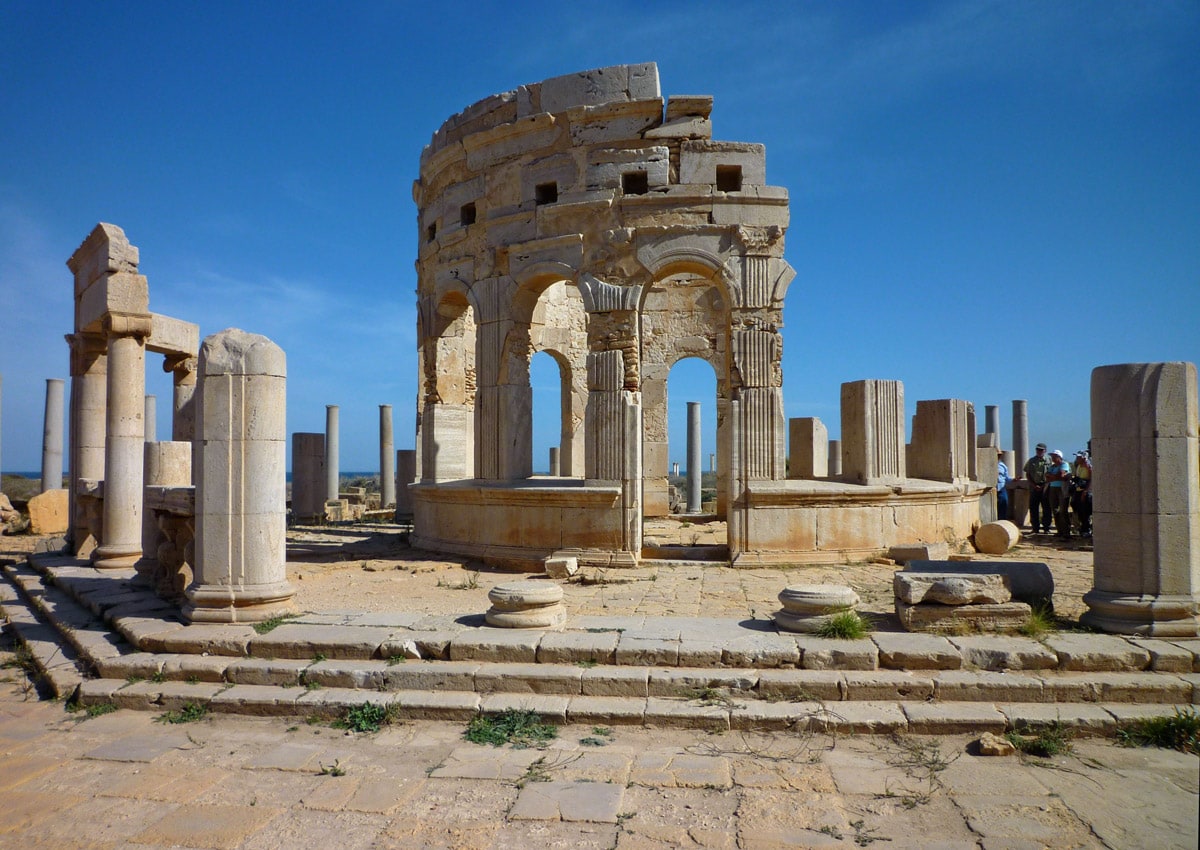
 In short
In short
One of the best preserved Ancient Roman city in the world (next to Palmyra, Jerash, Herculanum and Pompeii) is Leptis Magna in Libya. It is beautiful tourist destination – extensive ruins, numerous art values and no hordes of tourists.
 52.4%
52.4%
GPS coordinates
Name in Arabic
Alternate names
Founded
Period of flourishing
Area
UNESCO World Heritage status
Map of the site
If you see this after your page is loaded completely, leafletJS files are missing.
 In detail
In detail
History
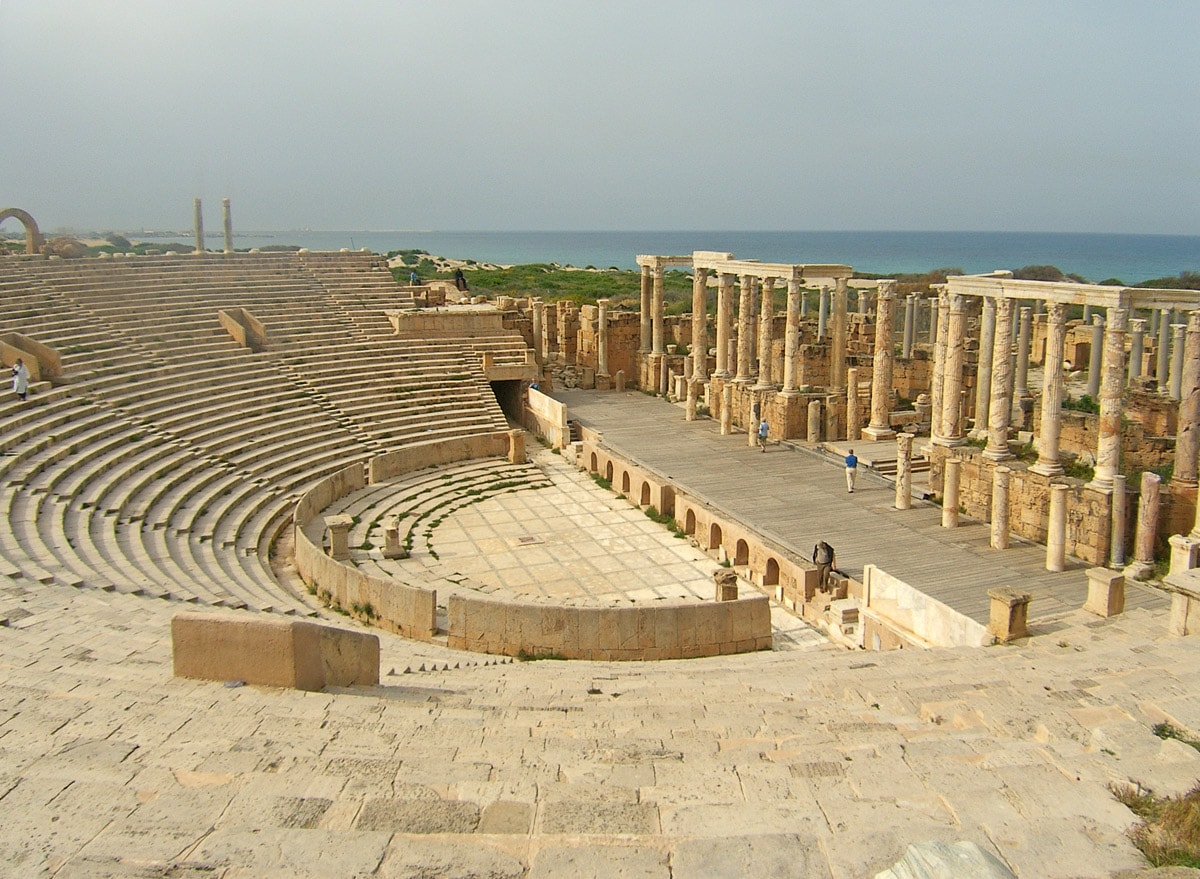
Ancient town
Leptis Magna existed for longer time than most contemporary cities. Most likely this port city at the mouth of Lubda Wadi was founded by Berbers and Phoenicians around 1000 BC and was named in Lybico-Berber name – Lpqy.
This town was small and not so prominent until the 4th century BC. By this time Carthage became a prominent centre in Mediterranean and Leptis Magna became a part of the state of Carthage.
Roman times
In 146 BC it became Roman city, then in the time period between 111 BC and the time of Emperor Tiberius (14 – 37 AD) it was an independent city. Afterwards it became a part of the Roman Empire in the province of Africa.
Flourishing in the times of Septimius Severus
Lucius Septimius Severus, a Berber from Leptis Magna became Roman Emperor in 193 AD and governed until 211 AD. Septimius Severus was the first foreign emperor in Rome – what shows that he was an extraordinary personality. He did not forget his hometown, in fact it was his favourite city in empire.
Construction works were started in the city as Septimius Severus planned to turn Leptis Magna into one of the most important cities in Africa, a rival of Carthage and Alexandria. This was one of the most ambitious construction programs ever realised in Roman Empire.
He was successful, at least in one aspect – Leptis Magna turned into one of the most beautiful cities in empire, it was almost fully replanned and rebuilt. Huge and modern port was built and city turned into a gateway to the reaches of Africa, it was very important and rich trade center. Unfortunately the large docks changed the regime of coastal streams and port silted up quickly.
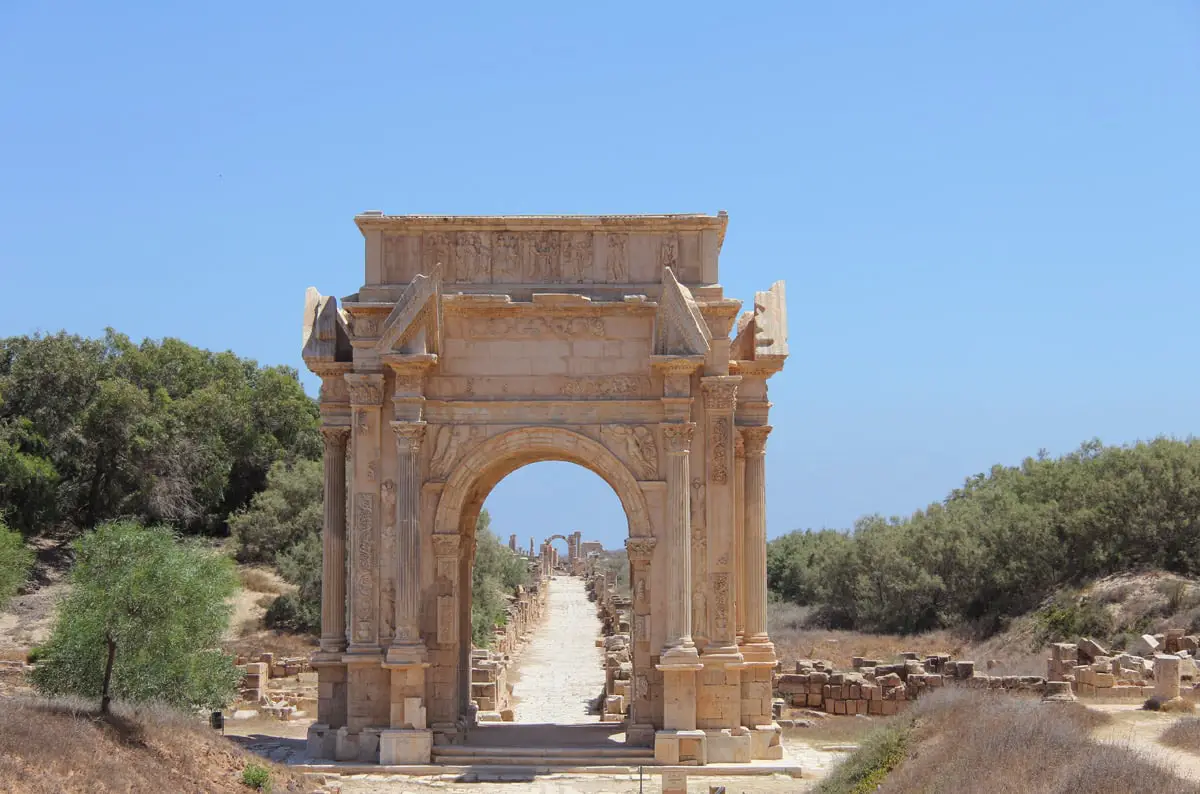
Leptis Magna was supplying Rome with almost any kind of goods – including wild animals for circuses, enslaved men for gladiator arenas and women – concubines.
Decline
Good times do not last forever – although successors of Septimius Severus for a while continued his work, in the 3rd century AD the fast development and ambitions of Leptis Magna came to stop. Decline of Roman Empire started and trade in Leptis Magna became much less intense. By the middle of the 4th century AD major parts of city were abandoned.
The ancient city did not die that easily. Some revival took place in the end of the 4th century AD, in the time of Theodosius I.
In 439 Leptis Magna fell to Vandals and their king Gaiseric ordered to demolish city walls of Leptis Magna to warrant against rebellion in the city. This made Leptis Magna an easy prey and Berbers raided the city in 523.
Belisarius (Byzantine Empire) captured Leptis Magna in 533 and it became a provincial capital. Nevertheless it never recovered from the devastation caused by Berbers.
When Arabs conquered Tripolitania in the 650s, city was abandoned, only garrison force was there.
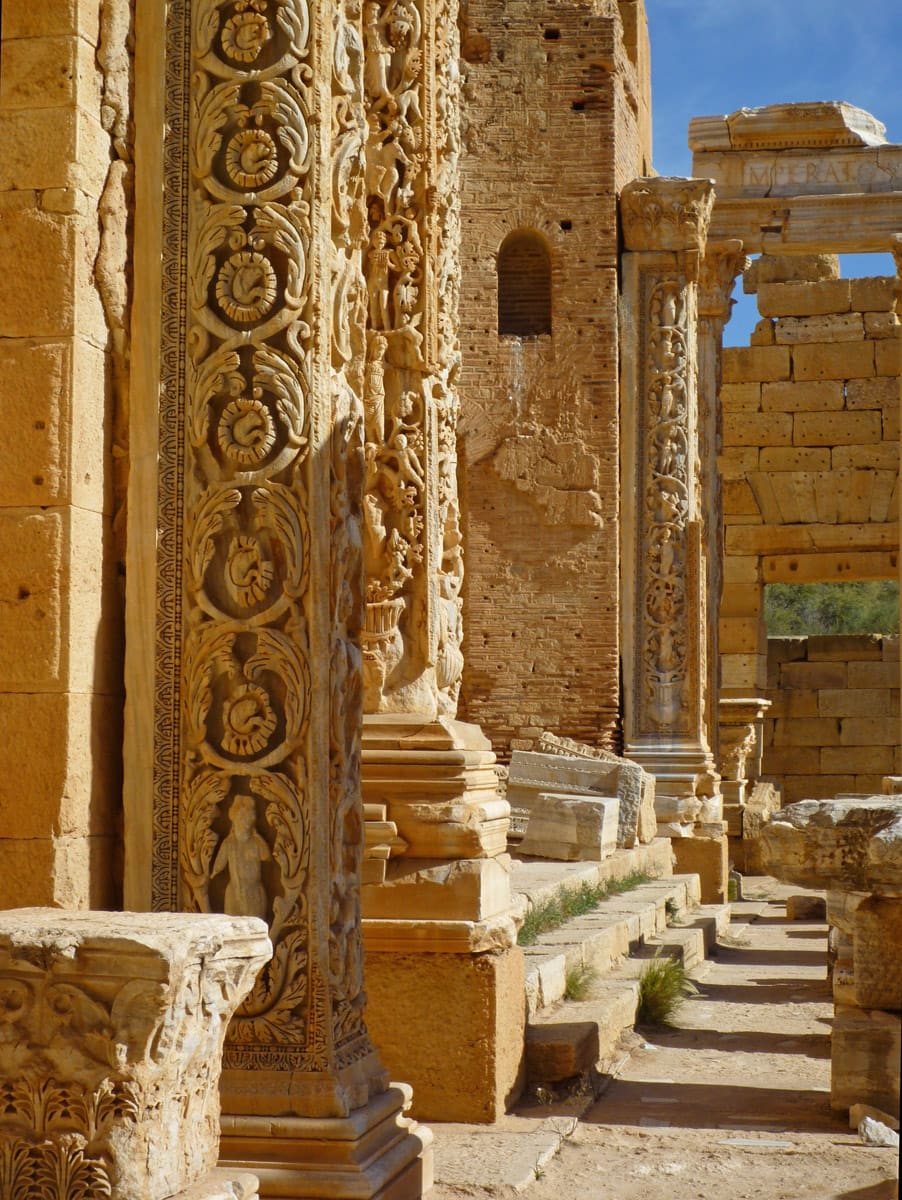
Present times
As centuries passed, ruins of the city were partially covered with drifting sands. These romantic ruins provided much inspiration for European architects and artists in the 18th and 19th century, influencing the aesthetics of the trendy Neo-Classicism style.
Only in the 20th century ruins were partially uncovered and reconstructed, works continue up to this day. Leptis Magna Musem was built near the ruins and it preserves much artwork found in this site.
Description
Leptis Magna was almost completely rebuilt in a united style in the times of Septimius Severus. Planning and construction of this magnificent city was an important achievement in urban planning, and the city was that prosperous, that its citizens invested in new directions in architecture and art. Thus Leptis Magna is a true showcase of Roman planning, architecture, and art, but it includes also a fusion of local, African traditions and crafts.
Some of the important details and structures in Leptis Magna are:
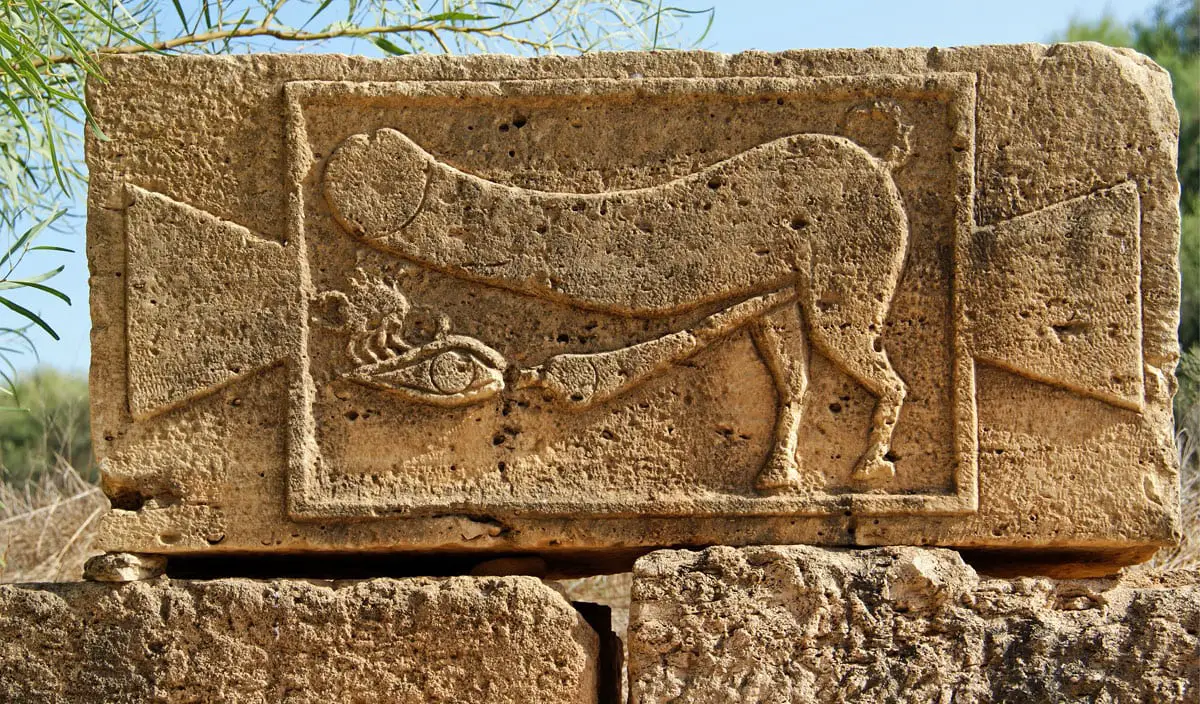
- Forum – heart of every Roman city, built in the times of Septimius Severus. Arches of forum are adorned with heads of Gorgon Medusa.
- Theater – magnificent structure built in the 1st century AD, construction was financed by several rich aristocrats.
- Amphitheater – built in AD 56. Romans used an old quarry for its construction.
- Christian basilica – one of the most magnificent and largest buildings in the city, 160 m long and 69 m wide. Built in AD 216. Basilica is adorned with beautiful stone carvings, such as the depiction of the Twelve Labours of Hercules and Life of Dionysus.
- Arch of Septimius Severus. This enormous arch was erected over the crossroads of the two main streets in 203 AD. Its friezes show the grandeur of Septimius and his family. Current building is replica of the original arch which is in Tripoli now.
- Baths, built in the times of the emperor Hadrian (117 – 138). Baths are adorned with colourful paintings, mainly showing hunting scenes.
- Market. Once important complex of buildings in this trade city. Initially market was built here in the 9th century AD, but present structures were built in the times of Septimius Severus. There are well preserved different tools of traders, e.g. measuring tools.
- Hippodrome (Circus) – 40 m long racecourse, built in the 2nd century AD.
- Port. This extensive complex of structures – quays, channels, jetties, storage areas, fortifications – has been well preserved because port was rather soon silted up and sediments have conserved these structures. Port of Leptis Magna was one of busiest harbours in ancient world.
- Collonaded street between the port and city centre is unusual dominant which shows how impressive the city was in the past. Street is 410 m long and led towards circular plaza with beautiful nymphaeum.
- Ancient mosaics. In the city have been found some of the best ancient mosaics, including an amazing scene where tired gladiator sits and looks at his slain opponent.
- Remnants of aqueduct. City received its water from this 19 km long structure.
- Villa Serene. A bit aside from the ruins of Leptis Magna stands this well preserved Byzantine villa of wealthy man. Interiors of this building still preserve beautiful mosaics.
Near the amphitheaters have been preserved also remains of much older buildings – early Punic structures.
 Linked articles
Linked articles

Wonders of Libya
Libya for the most part is covered with desert. This country is enormous, f.e. the distance from Tripoli to the southernmost point of Libya exceeds the distance between Tripoli and Wien. This giant land has lots of secrets – landmarks created by long-lost cultures.
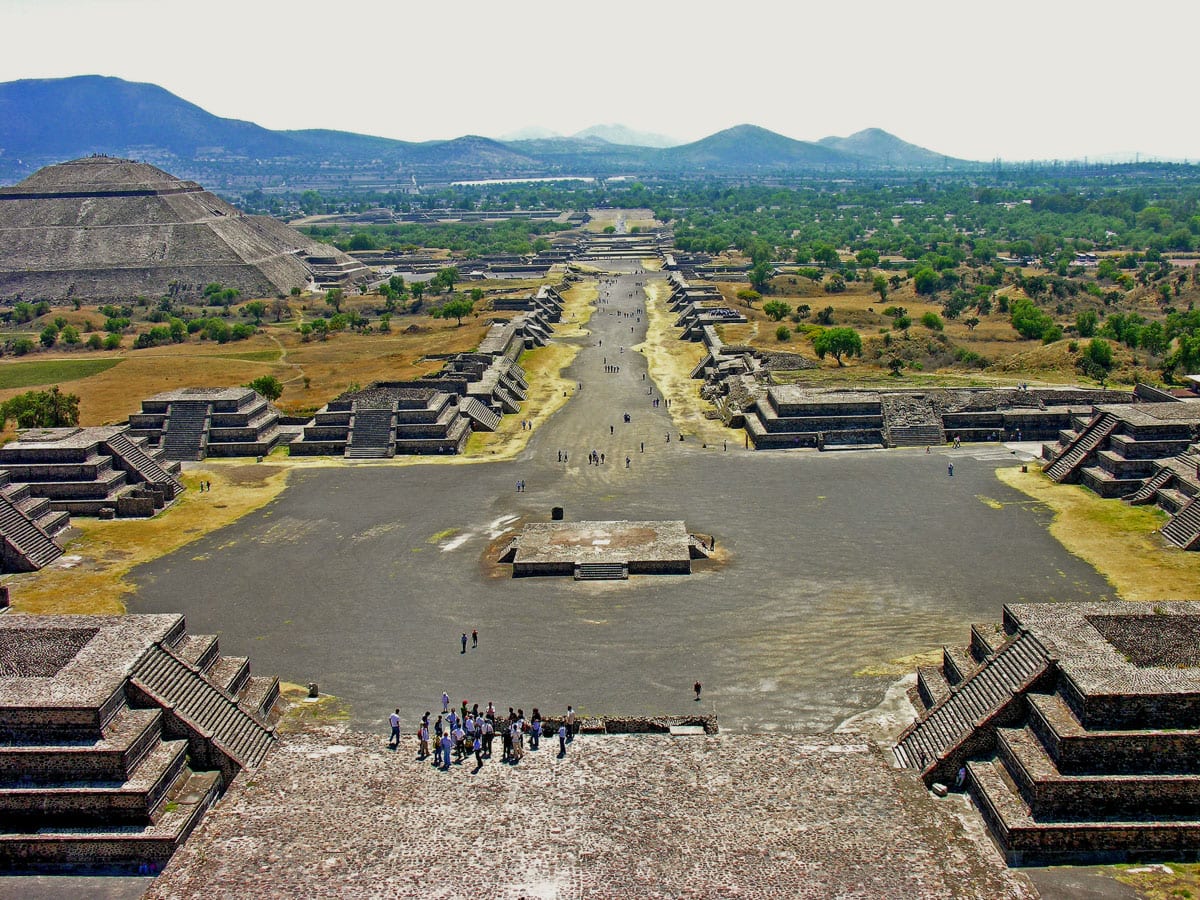
Ancient cities and towns
It turns out that urban planning is a very old profession. The urban fabric of ancient settlements – their structure and evolution gives a lot of food for thoughts about the nature of humans and civilization.
Wondermondo includes in the category of ancient cities and towns those settlements which have developed as urban areas at least 1500 years ago: around 500 AD.

Abandoned cities and towns
The main impression created by abandoned cities is intimate. This is a mixed feeling of sadness, unclear anxiety (“my city will not be eternal either”), and at the same time – inspiration from the abilities of our ancestors. Long ago, without electricity, paper, or different mechanisms, they managed to create magnificent structures, that covered many square kilometers.
 Recommended books
Recommended books
Leptis Magna: Emperor’s Dream on the Edge of the Desert
In the year 384 A.D. in the city of Leptis Magna, the heir of an imperial Roman family reflects on how the Roman world has changed in the decades since its peak when his city was home to a dynasty of Roman emperors. This historical novel is based on the writings of a Roman historian from that time and is told in a series of short stories in memoir style.


